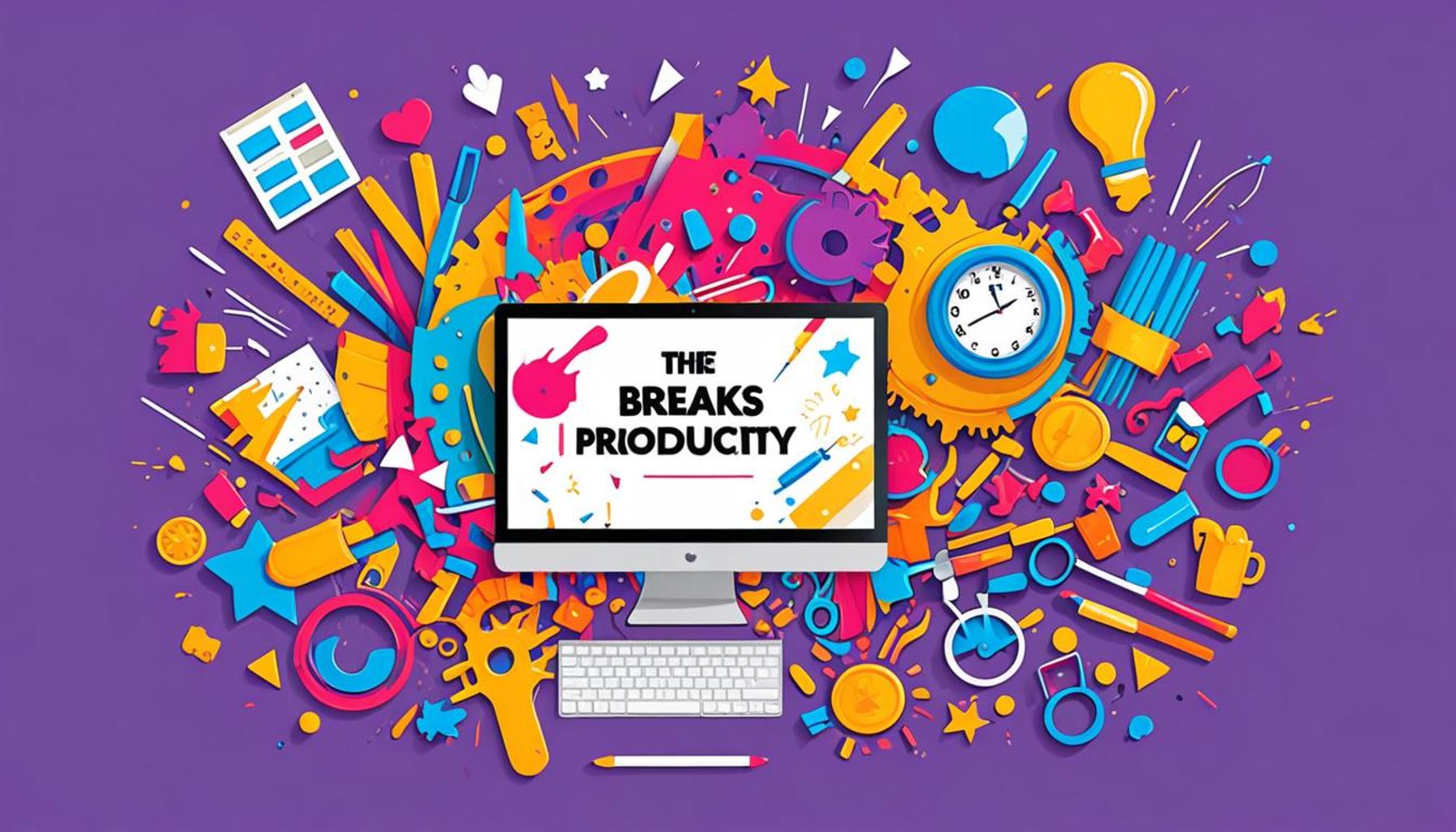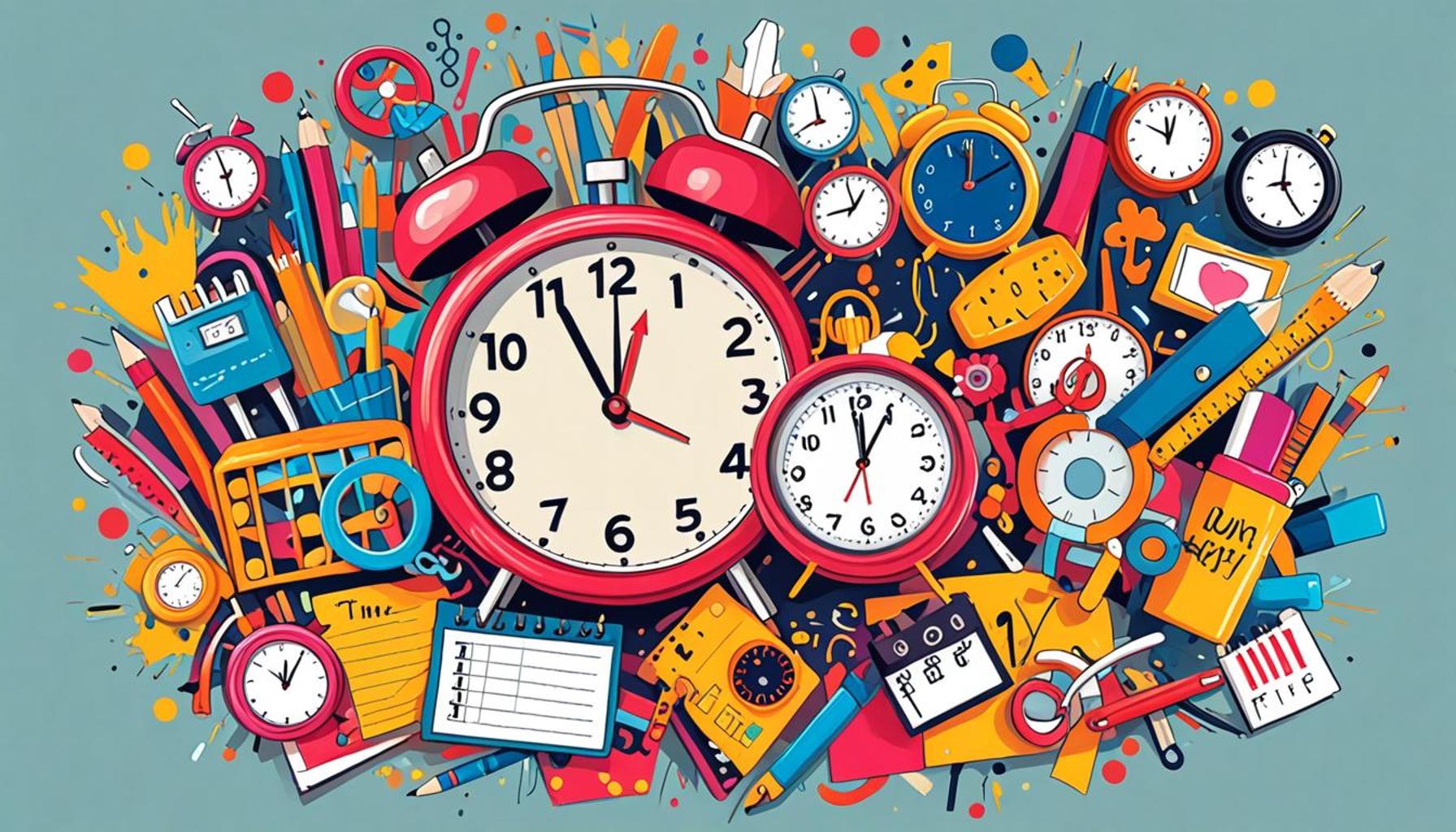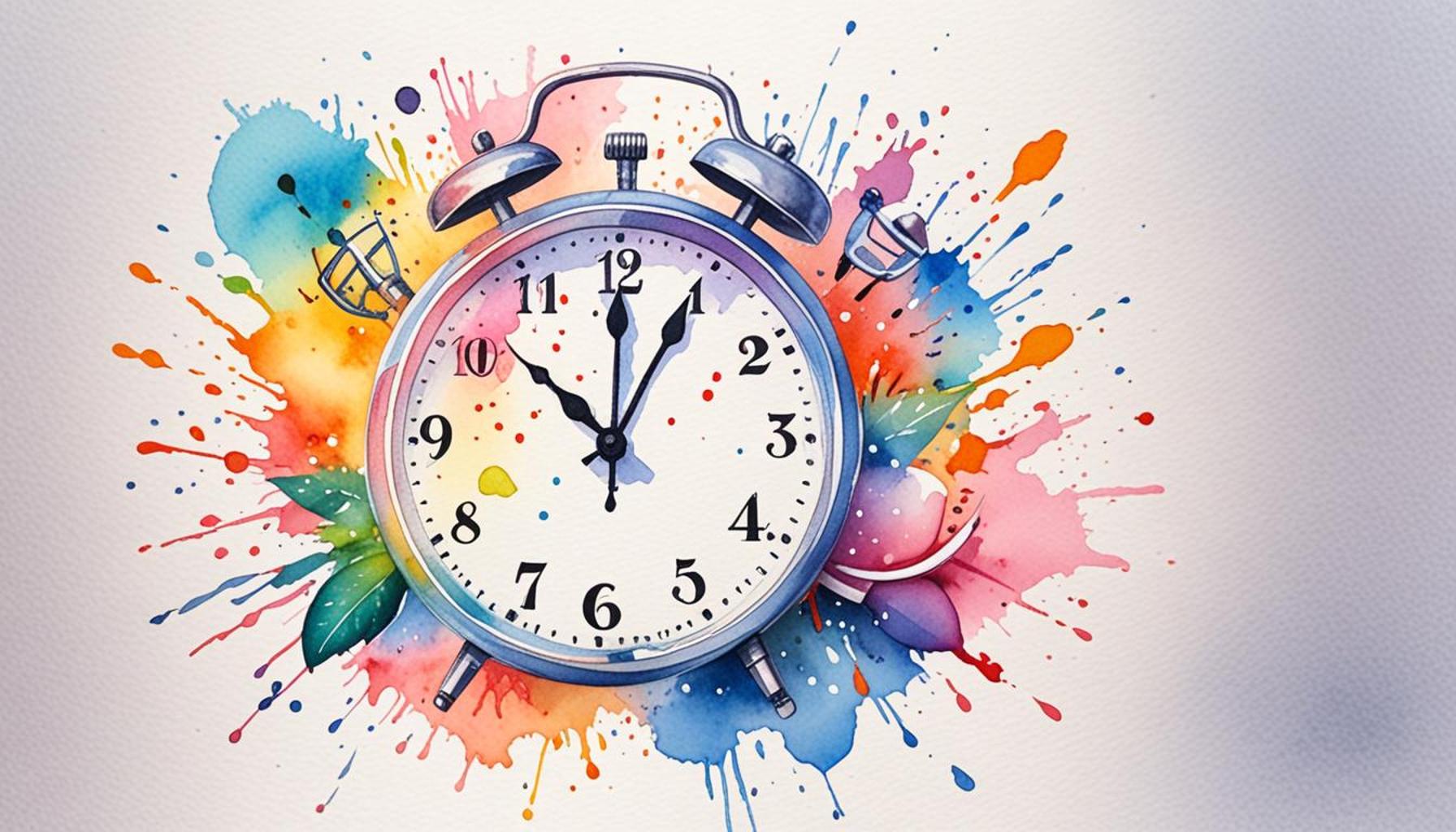Maximize Efficiency The Role of Breaks in Boosting Productivity

The Importance of Breaks in Enhancing Workplace Efficiency
In an era where productivity is often equated with constant activity, the benefits of pausing for breaks are sometimes overlooked. However, it is becoming increasingly evident that integrating strategic rest periods into our daily routines can elevate work performance significantly. Research findings have consistently highlighted the potential of these intervals to both replenish cognitive resources and foster creative thinking.
Take, for instance, the concept of the Pomodoro Technique, a time management method developed by Francesco Cirillo in the late 1980s. This technique involves working for 25 minutes, followed by a 5-minute break, with longer rest periods after every four cycles. Studies suggest that using this method can bolster concentration and focus, leading individuals to accomplish more in less time. Such structured breaks allow for the brain to recharge, making it easier to return to tasks with renewed vigor.
Moreover, the act of taking breaks has tangible psychological benefits. A study published in the journal Applied Psychology: Health and Well-Being found that employees who took regular breaks reported lower levels of stress and increased job satisfaction. These breaks provide a necessary escape from the pressures of work, allowing employees to process information and return to projects with a fresh perspective. This can be particularly beneficial in high-stakes professions, such as healthcare and teaching, where burnout tends to be prevalent.
Benefits of Taking Strategic Breaks
- Improved Focus: Short pauses allow the mind to reset, which can enhance concentration on the next task. For many, staring at the same screen for hours leads to fatigue; a brief walk or a glass of water can serve as a refreshing reset.
- Increased Creativity: Exposure to different environments or activities during breaks can lead to unexpected ideas. For example, many creatives have claimed that their best ideas often come during casual moments, like showering or taking a walk.
- Reduced Stress: Implementing regular breaks can be a proactive measure against anxiety and mental fatigue, promoting a more sustainable approach to productivity.
The implications of these findings extend beyond individual productivity to encompass workplace culture as a whole. Employers who encourage break-taking can cultivate a more engaged and satisfied workforce. Companies like Google and Microsoft have long championed flexible break policies, believing that happier employees lead to higher productivity rates. Employees who feel valued and understood in their need for breaks are more likely to be loyal and invested in their work.
In sum, the evidence clearly supports the idea that breaks are not a luxury, but a necessity for both personal health and professional efficiency. Embracing this practice could be the game-changer many organizations need to maintain a competitive edge in today’s dynamic market. The next step is to explore how to effectively integrate these break strategies into our daily routines, further emphasizing their critical role in achieving long-term success.

SEE ALSO: Click here to read another article
Understanding the Science Behind Breaks
To appreciate the impact of breaks on productivity, it’s important to delve into the science behind them. Neuroscientific research has revealed that the brain isn’t designed to concentrate effectively for extended periods. In fact, studies indicate that our attention span wanes significantly after about 20 minutes of focused work. Following this natural pattern, short breaks can re-engage our cognitive faculties, allowing for improved information retention and enhanced problem-solving capabilities.
Further reinforcement comes from the concept of cognitive load. When we overload our working memory, we decrease our efficiency, leading to mental fatigue. To alleviate this, strategic breaks serve as a reset mechanism. Research led by the University of Illinois found that students who took brief pauses during cognitive tasks performed better than those who worked continuously. Their increased performance was attributed to the opportunity to consolidate and process information during these intervals.
Types of Breaks and Their Unique Benefits
Not all breaks are created equal, and understanding the different types can help individuals maximize their efficiency. Here are some effective break strategies that can enhance productivity:
- Micro-Breaks: Lasting just a few minutes, these quick intervals can include stretching or deep breathing. Research shows that even small pauses can significantly improve focus and energy levels.
- Movement Breaks: Engaging in physical activity, such as a brisk walk or simple exercises, has been linked to greater creativity. A study from Stanford University found that walking not only enhances creativity but also promotes access to a broader range of ideas.
- Social Breaks: Connecting with colleagues during short breaks can reinforce teamwork and collaboration. Casual interactions often lead to shared ideas that foster a more innovative working environment.
- Mindfulness Breaks: Practices like meditation or mindful breathing can reduce stress and promote mental clarity, enabling one to return to tasks with a refreshed mindset. Studies highlight that just a few minutes of mindfulness can help mitigate workplace anxiety.
Incorporating these various break styles into a daily routine can encourage employees to find what works best for them. Notably, high-pressure work environments, such as tech startups or finance firms, intensify the importance of integrating breaks as they help combat potential burnout. Companies that acknowledge the diverse needs for breaks witness not only an increase in productivity but also a culture of well-being that attracts and retains top talent.
With a clearer understanding of the mechanisms behind breaks, it’s crucial to consider how organizations can champion these practices. Integrating a break-friendly culture within workplaces is not merely a trend; it represents a foundational shift toward smarter work methods that value mental health and efficiency alike.
Maximize Efficiency: The Role of Breaks in Boosting Productivity
In today’s fast-paced work environment, the quest to maximize efficiency is more critical than ever. However, one crucial factor that is often overlooked is the role of breaks in enhancing overall productivity. Scientific research reveals that taking breaks not only refreshes our minds but also significantly boosts our focus and creativity. A study conducted by the Draugiem Group found that the most productive workers take 17-minute breaks after every 52 minutes of work, thus maximizing their output during active work sessions.
When employees take time away from their desks, they allow their cognitive functions to reset. During these breaks, engaging in physical activities, social interactions, or even simple stretching can contribute to better mental health and a reduction in stress levels. Furthermore, short breaks can enhance problem-solving skills and facilitate better decision-making. This approach aligns with the principles of time management and ensures that workers remain engaged and effective throughout their workday.
| Break Types | Expected Outcomes |
|---|---|
| Microbreaks | Enhance alertness and focus |
| Physical Activity | Improves mood and reduces fatigue |
| Socializing | Promotes teamwork and reduces isolation |
| Mindfulness Exercises | Increases mental clarity and reduces stress |
By integrating these break strategies into the workday, organizations can foster an environment that prioritizes employee well-being and enhances long-term productivity. Understanding the science behind breaks equips us to explore more innovative approaches to work-life balance, making the work environment not just about productivity, but also about better mental health and job satisfaction.
CHECK OUT: Click here to explore more
Implementing Breaks for Enhanced Workplace Culture
As organizations increasingly recognize the value of breaks, it is essential to explore practical strategies for implementation. Leaders can establish an environment that not only allows but encourages breaks as part of the workday. A growing body of evidence suggests that companies actively promoting structured breaks can see substantial improvements in employee engagement and overall productivity.
One effective method is the introduction of scheduled break times. When breaks are planned into the work schedule, employees are more likely to participate without guilt or hesitation. Companies like Google and Salesforce have successfully integrated play and relaxation spaces into their offices, encouraging teams to step away from their desks for mindfulness activities or socialization. This dedicated space not only reinforces the importance of stepping back but also enhances camaraderie and creativity among team members.
Moreover, organizations can take a cue from the Pomodoro Technique, which suggests working in focused intervals of 25 minutes followed by a 5-minute break. This method emphasizes concentration while ensuring periodic opportunities for recovery, striking a balanced rhythm of productivity. Studies indicate that implementing this technique can lead to a significant boost in output, with many users reporting up to a 40% increase in work efficiency.
The Role of Leadership in Promoting Breaks
Leadership plays a crucial role in creating a culture where breaks are normalized and embraced. Encouraging management to model these behaviors sets a precedent for employees. When leaders are visibly taking breaks, participating in team activities, or even using time for personal development, it serves as a strong message: breaks are not just permitted; they are integral to a high-performing workplace.
Furthermore, organizations can initiate feedback loops where employees can share their experiences and preferences regarding breaks. By engaging staff in conversations about what types of breaks they find most beneficial, employers not only gather valuable insights but also foster a more inclusive workplace culture. Surveys or informal check-ins can uncover preferences, allowing businesses to tailor break programs that resonate with their teams.
Training sessions or workshops focusing on the significance of breaks can further empower employees. Equipping teams with knowledge about the science of productivity, stress relief techniques, and the benefits of regular downtime can lead to widespread acceptance of break practices. Companies that invest in such educational initiatives often witness a notable increase in employee satisfaction and engagement, which ultimately translates to heightened productivity.
Leveraging Technology to Encourage Breaks
In today’s digital era, technology can serve as an ally in scheduling and reminding employees to take breaks. Applications like Time Out and Stretchly remind users to take regular breaks, promoting healthier work habits. These tools can limit screen time, encourage stretches, or even facilitate social connections among remote teams, diminishing isolation and enhancing teamwork.
In privatized sectors and remote work environments, where the boundaries between personal and professional life often blur, such tools become even more critical. The combination of flexibility with structured breaks creates a harmonious balance, making it easier for employees to remain productive while preserving their mental health.
Ultimately, fostering a break-positive environment not only focuses on individual health but also champions the long-term success and sustainability of the organization. As workplace dynamics evolve, prioritizing breaks as essential to productivity may well be the key differentiator in today’s competitive market.
SEE ALSO: Click here to read another article
Conclusion: Embracing Breaks for a Productive Future
In a rapidly evolving workplace landscape, understanding the critical role of breaks is no longer optional—it is essential. As we have explored, regular intervals of rest not only rejuvenate employees but also serve as a strategic tool for maximizing efficiency and bolstering productivity. Companies that adopt structured break practices, leveraging techniques such as the Pomodoro Technique and dedicated relaxation spaces, demonstrate that prioritizing downtime can lead to significant gains in performance and creativity.
Moreover, the role of leadership is paramount in this transformative journey. When leaders actively promote and participate in break strategies, they shift workplace culture from a productivity-at-all-costs mentality to one that values well-being and engagement. By fostering an environment that welcomes feedback and open dialogue about break preferences, organizations can tailor experiences to meet the unique needs of their workforce.
As technology enhances our ability to manage time more effectively, tools that remind employees to take breaks further integrate this practice into daily workflow. The result is not just a more competent workforce, but a healthier, more satisfied one. Investing in employee well-being translates directly into organizational success, as happier employees are more committed and driven to achieve collective goals.
In conclusion, as we look towards the future, it becomes increasingly clear that breaks are an indispensable facet of productivity. Companies willing to embrace and implement these strategies are not just boosting efficiency; they are leading the charge for a more innovative and sustainable workplace. As we continue to redefine success, let us prioritize breaks not just as a luxury, but as a fundamental pillar of a thriving work culture.



